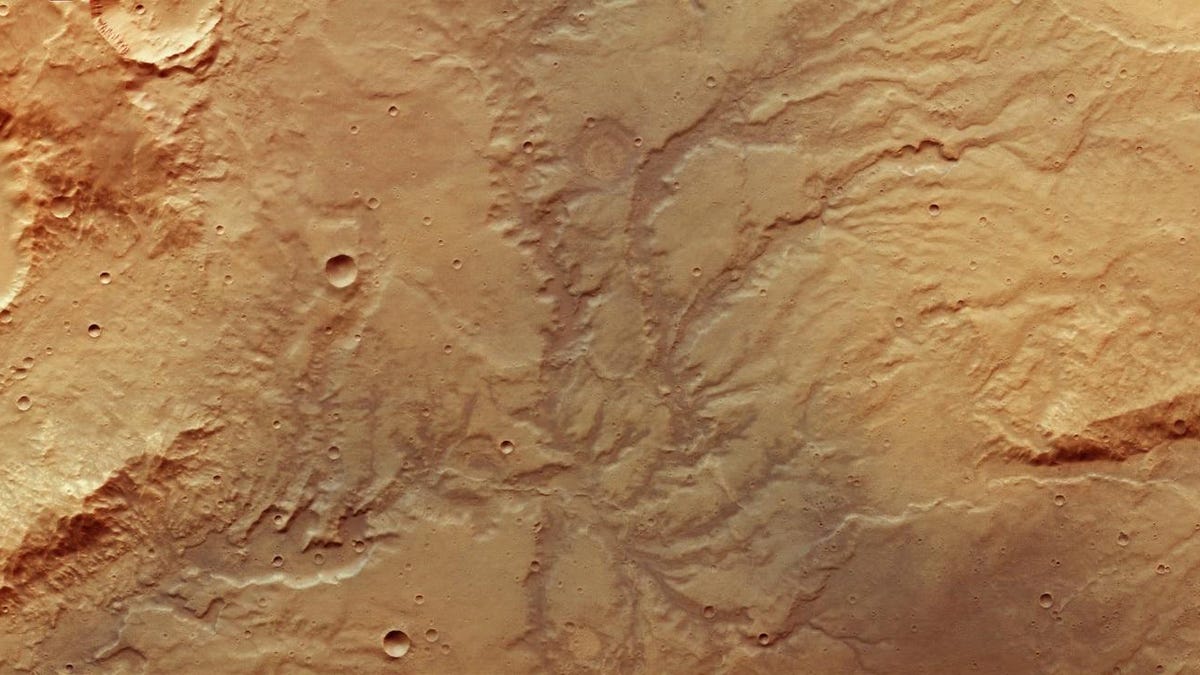Parched Mars river valley looks surprisingly Earth-like
ESA's Mars Express spacecraft gives us a scenic view of remnants from the planet's watery past.

ESA's Mars Express caught sight of this dried-out river valley network in November 2018.
Thanks to aerial and satellite views of Earth, we're all familiar with what river valleys look like from above. Seeing one on Mars highlights how similar our planets can appear despite their drastic differences.
The European Space Agency's Mars Express spacecraft has given us a spectacular view of a relic of the Red Planet's past. It's dry and dusty now, but we can see the remnants of a branching river valley network.
ESA also generated a perspective view that makes it feel like you're soaring across the planet.
A perspective view of a dried-out river valley on Mars.
Mars Express captured the image in November 2018 and ESA shared it on Thursday, saying it shows "clear signs of past water activity." The valley network is located in a highlands area east of the Huygens impact crater and north of the Hellas impact basin.
The valleys have undergone erosion over time, but the branch-like tributaries are still easily to spot.
ESA points to recent research indicating "the planet once had a thicker, denser atmosphere that was able to lock in far greater amounts of warmth, and therefore facilitate and support the flow of liquid water on the surface below."
The Mars Express imagery isn't the first sign of long-gone rivers on Mars, but it's one of the reasons we still hold out hope of one day finding signs of ancient life on the Red Planet. Scientists also suspect Mars is hiding a salty lake under its southern ice cap.
Mars is due to get a couple of new rovers from ESA/Roscosmos and NASA over the next few years. Both will be searching for signs of past life. ESA's river valley view just adds to the anticipation.

